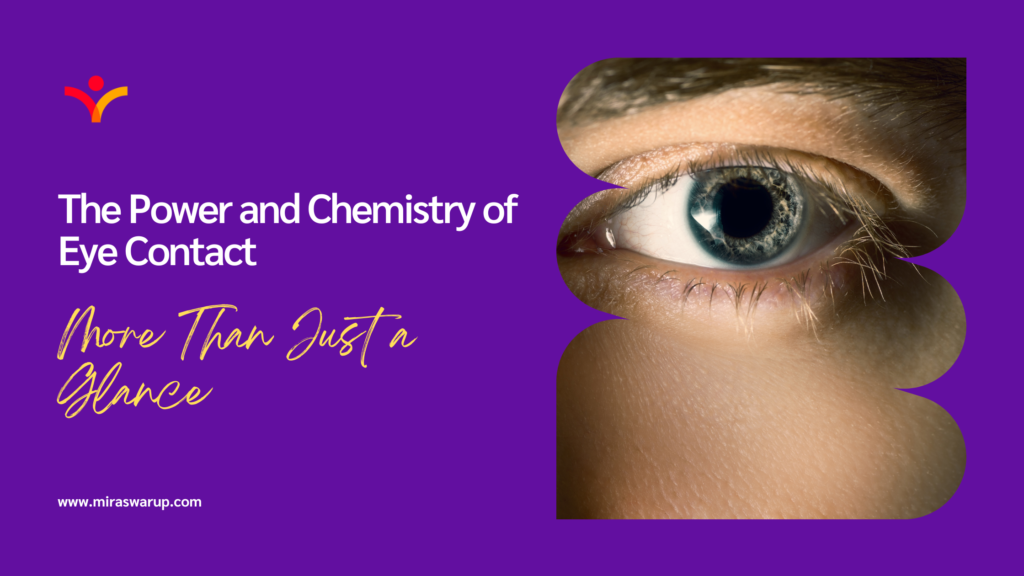The way we focus our gaze has a profound impact in a world where everything vies for our attention. Our eyes act as spotlights, shining a light on what grabs our attention. This eye contact conveys engagement and influences interpersonal connections in a variety of contexts; it is more than just a passing glance. We’ll discuss the dynamics of eye contact, its effects, and key lessons to learn in order to forge deep connections in this blog post.
The Spotlight of Attention
Our eyes are constantly drawn to the things that fascinate us, holding them there if they seem interesting enough. We communicate to the outside world “what’s on our mind” by looking at something. You’re telling someone they’re the only one “worthy” of attention right now when you smile at them, talk to them, or ask them pleasant questions. As Harvey Spectre in the television programme “Suits” so beautifully demonstrated, it is a gesture of respect and affirmation.
The Double-Edged Sword: Respect vs. Disrespect
But eye contact has two sides to it. It can convey respect but it can also convey contempt. A leer, glare, or sneer from someone has made us all feel disrespected. Eye contact can instead convey engagement rather than respect. Observe how people frequently turn away during challenging conversations, indicating a lack of interest in participating.
The Non-Personal Approach
Having a prop or visual aid nearby during a conflict promotes composure. You can show that it’s not a personal attack by focusing on a subject other than the person, such as sales figures or a report. Dr. Ross Campbell’s book How to Really Love Your Child, which emphasises positive eye contact and cautions against insisting on it during negative interactions, served as the source of inspiration for this technique.
The Changing Workplace Dynamics
The decline in face-to-face meetings and eye contact at work is noted in an insightful WSJ article. Long-term eye contact can indicate tenacity or even give away your position within an organisation. Building relationships, though, requires continued positive engagement and eye contact.
The Chemistry of Eye Contact
Eye contact has the power to create connections in addition to engaging. The hormone Oxytocin, also known as the “love hormone” or “cuddle hormone,” is released when two people make brief eye contact and is typically brought on by physical touch. According to studies, maintaining eye contact for just 8 to 10 seconds can increase trust and empathy.
Here is a value video I made on this for a quick view.
Key Takeaways
- Create Alignment: If you disagree or feel threatened on a personal level, direct eye contact can backfire. It opens a door to your authentic self, core values, and beliefs. If these clash with what’s being said, eye contact can hinder persuasion rather than help.
- Create Empathy: Direct eye contact helps the other person relate to what you’re saying. This subconscious influence generates empathy, a robust tool in persuasion. Coupled with well-chosen words, genuine and relaxed eye contact can win over an audience.
Conclusion
Eye contact is a multifaceted tool that we often overlook. It’s not just about showing interest or disapproval but about engaging, building relationships, and even influencing chemistry between individuals. Whether in personal life, as a parent, or in the professional world, understanding and using eye contact effectively can make a substantial difference in how we connect and communicate.

